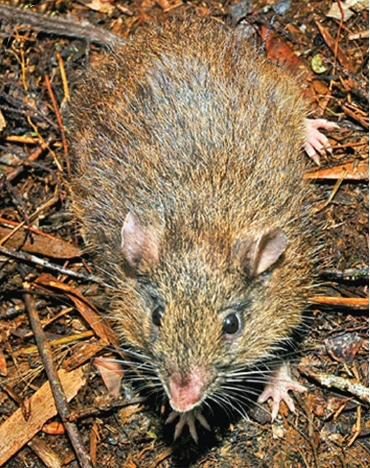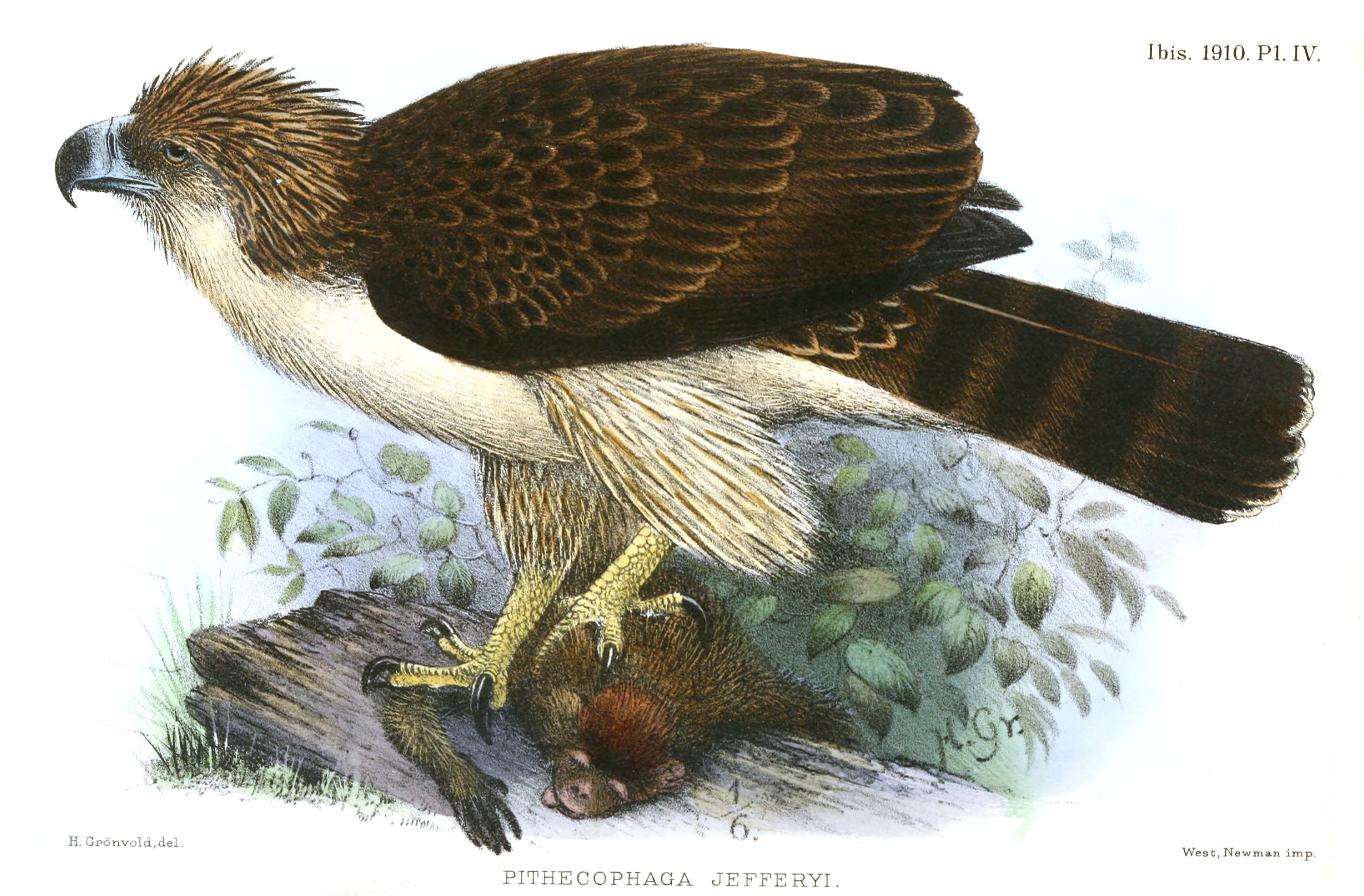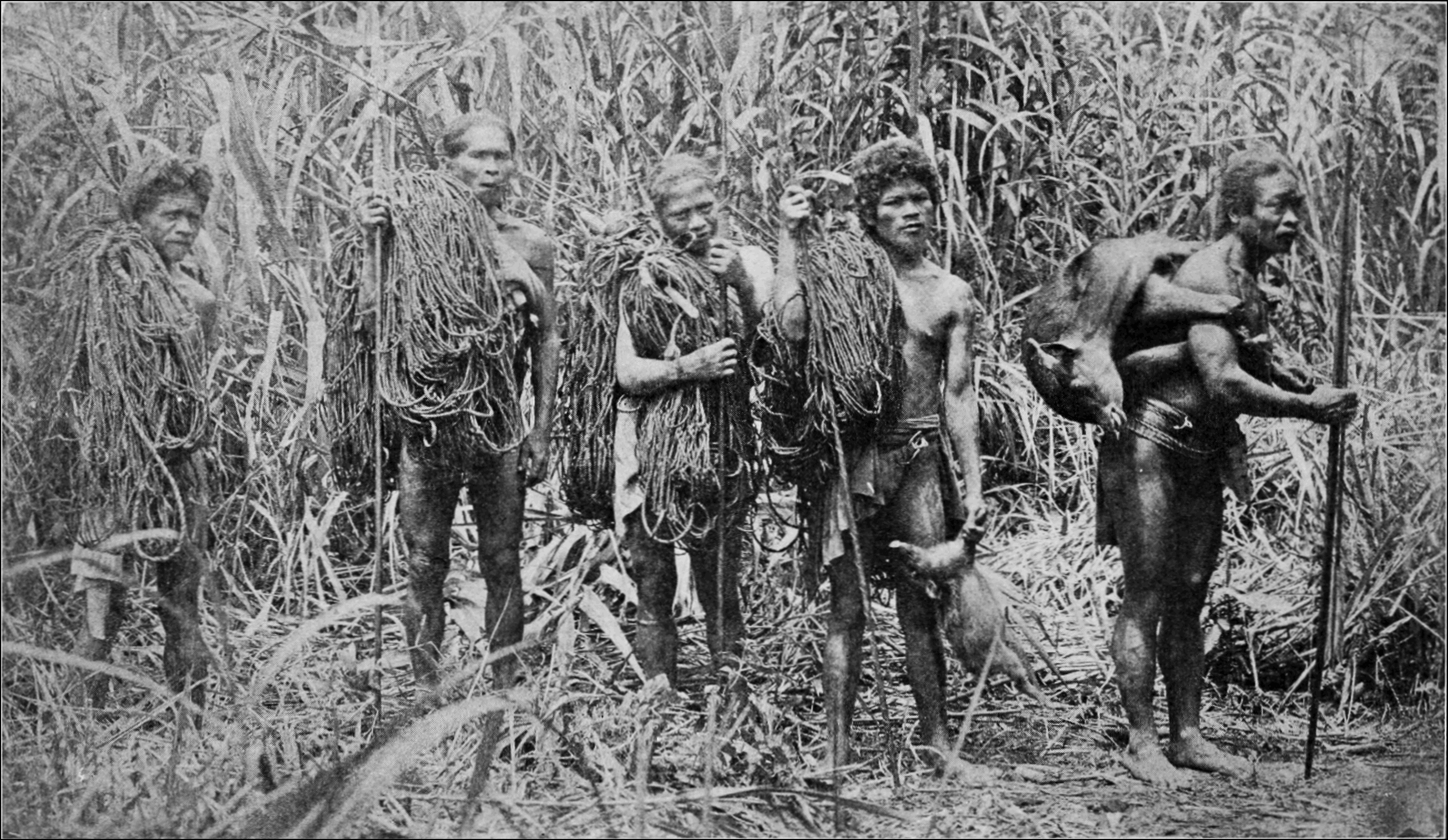|
Casecnan Protected Landscape
The Casecnan Protected Landscape is a protected area in the Casecnan River watershed of eastern Luzon in the Philippines. It has a total area of straddling the provinces of Nueva Vizcaya, Quirino and Aurora. The Casecnan River Watershed Forest Reserve was established in August 1987 by virtue of Executive Order No. 136 issued by President Corazon Aquino. In April 2000, the forest reserve was enlarged to and was reclassified as a protected landscape area through Proclamation No. 289. It is considered one of the last remaining substantial water sources for the region of Central Luzon. Description The protected landscape area stretches over the municipalities of Dupax del Norte and Dupax del Sur in Nueva Vizcaya, Maddela in Quirino, and Dipaculao in Aurora. It was established to protect the watershed around the Casecnan River, a tributary of the Rio Grande de Cagayan which flows through the mountains of central Sierra Madre, the Caraballo and Mamparang ranges. The river is used ... [...More Info...] [...Related Items...] OR: [Wikipedia] [Google] [Baidu] |
Nueva Vizcaya
Nueva Vizcaya, officially the Province of Nueva Vizcaya ( ilo, Probinsia ti Nueva Vizcaya; gad, Probinsia na Nueva Vizcaya; Pangasinan: ''Luyag/Probinsia na Nueva Vizcaya''; tl, Lalawigan ng Nueva Vizcaya ), is a landlocked province in the Philippines located in the Cagayan Valley region in Luzon. Its capital is Bayombong. It is bordered by Benguet to the west, Ifugao to the north, Isabela to the northeast, Quirino to the east, Aurora to the southeast, Nueva Ecija to the south, and Pangasinan to the southwest. Quirino province was created from Nueva Vizcaya in 1966. Etymology The name ''Nueva Vizcaya'' is derived from the name of the province of Biscay (called ''Vizcaya'' in Spanish, Bizkaia in Basque) during the Spanish colonial period. This can be seen in the right part of the seal, a representation of the heraldic of Vizcaya in Spain. History Spanish period The areas of present-day Nueva Vizcaya used to be part of the vast Provincia de Cagayan. Organized religi ... [...More Info...] [...Related Items...] OR: [Wikipedia] [Google] [Baidu] |
Senate Of The Philippines
The Senate of the Philippines (Filipino: ''Senado ng Pilipinas'', also ''Mataas na Kapulungan ng Pilipinas'' or "upper chamber") is the upper house of Congress of the bicameral legislature of the Philippines with the House of Representatives as the lower house. The Senate is composed of 24 senators who are elected at-large (the country forms one district in its elections) under plurality-at-large voting. Senators serve six-year terms with a maximum of two consecutive terms, with half of the senators elected in staggered elections every three years. When the Senate was restored by the 1987 Constitution, the 24 senators who were elected in 1987 served until 1992. In 1992 the 12 candidates for the Senate obtaining the highest number of votes served until 1998, while the next 12 served until 1995. Thereafter, each senator elected serves the full six years. From 1945 to 1972, the Senate was a continuing body, with only eight seats up every two years. Aside from having its concur ... [...More Info...] [...Related Items...] OR: [Wikipedia] [Google] [Baidu] |
Salinas Natural Monument
The Salinas Natural Monument is a natural monument comprising saline springs and forested mountains in southern Cagayan Valley in the Philippines. It is one of four protected areas in the landlocked province of Nueva Vizcaya spanning an area of in the municipalities of Bambang, Kayapa and Aritao. The park was established on May 18, 1914, as the Salinas Forest Reserve covering the Salinas Salt Springs and surrounding forest through Executive Order No. 44 signed by Governor-General Francis Burton Harrison. In 1926, through amendments made in Proclamation No. 53 by Governor-General Leonard Wood, the forest reserve was re-established as the Salinas Deer Refuge. Salinas was finally declared a natural monument in 2000 under the National Integrated Protected Areas System through Proclamation No. 275 by President Joseph Estrada. Description The natural monument is centered on the mountain of salt mines ( es, salinas) in the barangay of the same name in Bambang municipality near the con ... [...More Info...] [...Related Items...] OR: [Wikipedia] [Google] [Baidu] |
Philippine Warty Pig
The Philippine warty pig (''Sus philippensis'') is one of four known species in the pig genus ('' Sus'') endemic to the Philippines. The other three endemic species are the Visayan warty pig (''S. cebifrons''), Mindoro warty pig (''S. oliveri'') and the Palawan bearded pig (''S. ahoenobarbus''), also being rare members of the family Suidae. Philippine warty pigs have two pairs of warts, with a tuft of hair extending outwards from the warts closest to the jaw. It has multiple native common names, but it is most widely known as ''baboy damo'' ("bush pig") in Tagalog. Subspecies There are at least two recognized subspecies of the Philippine warty pig: * ''S. p. philippensis'' (from Luzon and nearby islands) * ''S. p. mindanensis'' (from Mindanao) Distribution and habitat In general, the original distribution of ''S. philippensis'' covered the western islands of the Philippines, while the original distribution of ''S. cebifrons'' covered the central and eastern islands. Specifically ... [...More Info...] [...Related Items...] OR: [Wikipedia] [Google] [Baidu] |
Cloud Rat
The cloud rats or cloudrunners are a tribe (Phloeomyini) of arboreal and nocturnal herbivorous rodents endemic to the cloud forests of the Philippines. They belong to the family Muridae and include five genera: '' Batomys'' (hairy-tailed rats), ''Carpomys'' (dwarf cloud rats), '' Crateromys'' (bushy-tailed cloud rats), '' Musseromys'' (Luzon tree mice), and ''Phloeomys'' (giant cloud rats). They range in size from as large as to as small as . Cloud rats are threatened by habitat loss and illegal hunting. Several species are endangered or critically endangered. Description Cloud rats are characterized by long furry or hairy tails and short hind limbs with grasping feet. They spend most of their time in the canopy of cloud forests, hence the name "cloud rat" or "cloudrunner". They are believed to be entirely herbivorous, primarily eating leaves, buds, bark, fruits, and seeds. Their ecology and behavior are poorly known. Cloud rats belonging to the genera ''Batomys'', ''Crateromys ... [...More Info...] [...Related Items...] OR: [Wikipedia] [Google] [Baidu] |
Philippine Eagle
The Philippine eagle (''Pithecophaga jefferyi''), also known as the monkey-eating eagle or great Philippine eagle, is a critically endangered species of eagle of the family Accipitridae which is endemic to forests in the Philippines. It has brown and white-colored plumage, a shaggy crest, and generally measures in length and weighs . The Philippine eagle is considered the largest of the extant eagles in the world in terms of length and wing surface area, with only Steller's sea eagle and the Harpy eagle being larger in terms of weight and bulk. It has been declared the national bird of the Philippines.Kennedy, R. S., Gonzales, P. C.; Dickinson, E. C.; Miranda, H. C. Jr. and Fisher, T. H. (2000). ''A Guide to the Birds of the Philippines.'' Oxford University Press, New York. The most significant threat to the species is loss of habitat, a result of high levels of deforestation throughout most of its range. Killing a Philippine eagle is a criminal offence, punishable by law w ... [...More Info...] [...Related Items...] OR: [Wikipedia] [Google] [Baidu] |
Philippine Deer
The Philippine deer (''Rusa marianna''), also known as the Philippine sambar or Philippine brown deer, is a vulnerable deer species endemic to the Philippines. It was first described from introduced populations in the Mariana Islands, hence the specific name. Taxonomy ''Cervus mariannus'' was the scientific name proposed by Anselme Gaëtan Desmarest in 1822. It was subordinated to the genus ''Rusa''. Four subspecies are currently recognized: * ''R. m. marianna'' in Luzon biogeographic region * ''R. m. barandana'' in Mindoro * ''R. m. nigella'' in isolated upland areas of Mindanao * ''R. m. nigricans'' in lowland sites of Mindanao Characteristics The Philippine brown deer is relatively smaller than its relative, the sambar deer. Its head-and-body length and shoulder height measures , and , respectively. Its weight usually ranges from 40 to 60 kg. Generally, its color is brown with white tail underside. Antlers are common among males which measures 20 to 40 cm. Va ... [...More Info...] [...Related Items...] OR: [Wikipedia] [Google] [Baidu] |
Rodrigo Duterte
Rodrigo Roa Duterte (, ; born March 28, 1945), also known as Digong, Rody, and by the initials DU30 and PRRD, is a Filipino lawyer and politician who served as the 16th president of the Philippines from 2016 to 2022. He is the chairperson of PDP–Laban, the ruling political party in the Philippines during his presidency. Duterte is the first president of the Philippines to be from Mindanao, and is the oldest person to assume office, beginning his term at age 71. Born in Maasin, Leyte (now in Southern Leyte), Duterte moved to Davao as a child where his father, Vicente Duterte, served as provincial governor. He studied political science at the Lyceum of the Philippines University, graduating in 1968, before obtaining a law degree from San Beda College of Law in 1972. He then worked as a lawyer and was a prosecutor for Davao City, before becoming vice mayor and, subsequently, mayor of the city in the wake of the 1986 People Power Revolution. Duterte won seven terms and s ... [...More Info...] [...Related Items...] OR: [Wikipedia] [Google] [Baidu] |
Ilongot People
The Bugkalot (also Ilongot or Ibilao) are a tribe inhabiting the southern Sierra Madre and Caraballo Mountains, on the east side of Luzon in the Philippines, primarily in the provinces of Nueva Vizcaya and Nueva Ecija and along the mountain border between the provinces of Quirino and Aurora. They are also commonly referred to as "Ilongot", especially in older studies, but nowadays, the endonym Bugkalot is preferred in modern ethnic research. They were formerly headhunters. Presently, there are about 87,000 Bugkalots. The Bugkalots tend to inhabit areas close to rivers, as they provide a food source and a means for transportation. Their native language is the Bugkalot language, currently spoken by about 50,000 people. They also speak the Ilocano & Tagalog languages. Culture In Ivan Salva's study in 1980 of the Bugkalots, she described "gender differences related to the positive cultural value placed on adventure, travel, and knowledge of the external world." Bugkalot men, m ... [...More Info...] [...Related Items...] OR: [Wikipedia] [Google] [Baidu] |
Casecnan Dam
Casecnan Irrigation and Hydroelectric Plant is a dam diverting water from the Casecnan and Taan Rivers to the Pantabangan Reservoir through a long tunnel located near Pantabangan and Muñoz in Nueva Ecija province of the Philippines. The multi-purpose dam provides water for irrigation and hydroelectric power generation while its reservoir affords flood control. It was considered one of the most expensive hydroelectric plants built in the country, being next only to San Roque Dam. The Casecnan Irrigation and Power Generation Project is also located in Rizal, Nueva Ecija. The P6.75-B Project provides irrigation to 26,920 hectares of new farms in the Science City of Munoz, Talugtog, Guimba, Cuyapo, and Nampicuan, all of Nueva Ecija. It generates 150 megawatts of power for the Luzon grid that will supply cheap electricity to millions of people in Luzon including Metro Manilhttps://web.archive.org/web/20120429230325/http://www.jcmiras.net/surge/p171.htm] History In August 1987, for ... [...More Info...] [...Related Items...] OR: [Wikipedia] [Google] [Baidu] |
Nueva Ecija
Nueva Ecija, officially the Province of Nueva Ecija ( tgl, Lalawigan ng Nueva Ecija , also ; ilo, Probinsia ti Nueva Ecija; pag, Luyag/Probinsia na Nueva Ecija; Kapampangan: ''Lalawigan/Probinsia ning Nueva Ecija''), is a landlocked province in the Philippines located in the Central Luzon region. Its capital is the city of Palayan, while Cabanatuan, its former capital, is the largest local government unit (LGU). Nueva Ecija borders, from the south clockwise, Bulacan, Pampanga, Tarlac, Pangasinan, Nueva Vizcaya and Aurora. The province is nationally known as the ''Rice Granary of the Philippines'', producing the largest rice yield in the country. History Precolonial era These first settlers included tribes of Ilongots ( Egungot) or Italons, Abaca and Buquids. Settlements were built along the banks following the river's undulations. The Ilongots, meaning people of the forest, were the fierce headhunters and animist tribes who occupied Carranglan and the mountainous terrain of ... [...More Info...] [...Related Items...] OR: [Wikipedia] [Google] [Baidu] |
Pantabangan Dam
Pantabangan Dam is an earth-fill embankment dam on the Pampanga River located in Pantabangan in Nueva Ecija province of the Philippines. The multi-purpose dam provides water for irrigation and hydroelectric power generation while its reservoir, Pantabangan Lake, affords flood control. The reservoir is considered one of the largest in Southeast Asia and also one of the cleanest in the Philippines. Construction on the dam began in 1971 and it was completed in 1974. History In May 1969, the Congress of the Philippines authorized the development of the Pampanga Basin with Republic Act No. 5499. In October of that year, detailed studies of the Pantabangan site were carried out and lasted two years. By June 11, 1971, Pantabangan was an old town of around 300 years old. President Ferdinand Marcos and many others arrived for a ground breaking ceremony in Palayupay, Pantabangan, Nueva Ecija, to signal the beginning of the construction of Pantabangan Dam. The dam went into operation in Fe ... [...More Info...] [...Related Items...] OR: [Wikipedia] [Google] [Baidu] |






